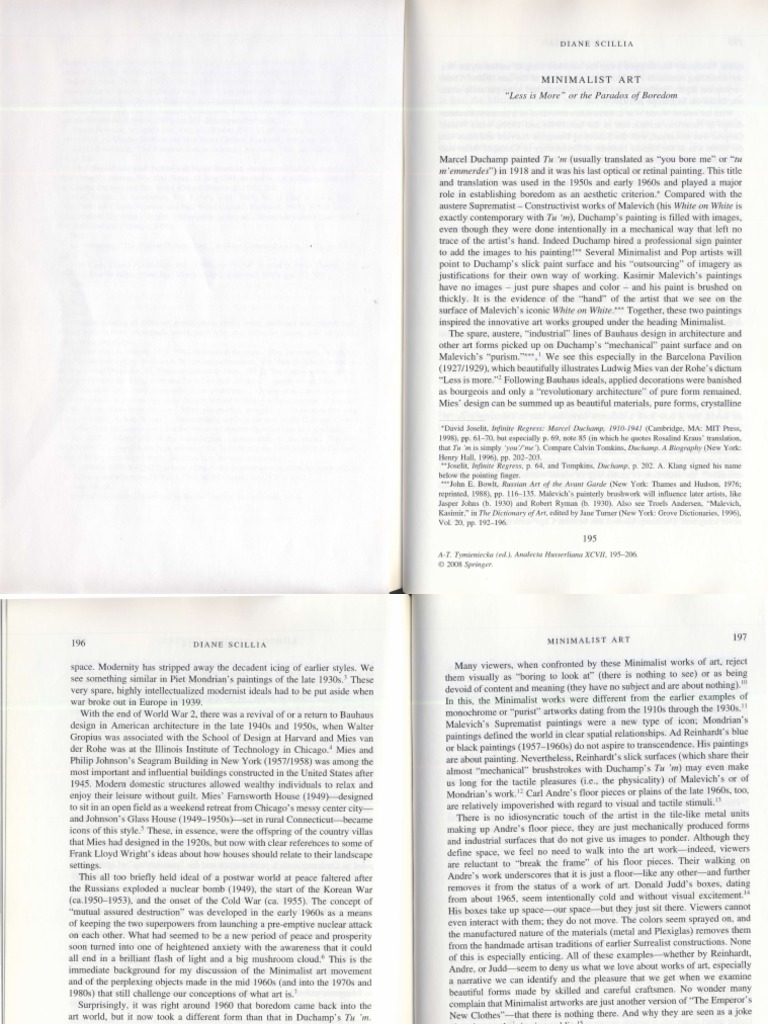The notion of minimalism within scientific discourse has garnered significant attention, spawning a dialogue that oscillates between appreciating the elegance of simplicity and confronting the complexities that emerge from it. The paradox of scientific minimalism posits that, in many contexts, diminished complexity can enhance clarity, foster understanding, and stimulate innovation. Embracing a minimalist approach not only pertains to aesthetics but also fundamentally influences the substance of scientific inquiry and dissemination. Various dimensions elucidate this paradigm, including methodology, communication, and the overarching philosophy of science itself.
At its core, scientific minimalism can be visualized through the lens of methodological rigor. In experimental design, for instance, the concept of “less is more” manifests as the prioritization of essential variables over superfluous data. By focusing on the critical elements of a study, researchers mitigate the risk of confounding variables obscuring results. This streamlined approach not only augments reproducibility but also enhances interpretability. A notable exemplar of this principle can be discerned in the realm of statistical analysis, where parsimony is often favored. The parsimony principle, urging scientists to seek the simplest model that sufficiently explains the data while avoiding overfitting, underscores the inherent tension between ambition and restraint in empirical research.
Moreover, in the domain of theoretical frameworks, the pursuit of elegant theories often leads to profound insights. The concept of elegance bears significant weight in scientific theorizing, serving as a compass guiding researchers toward models that are not only effective but also aesthetically pleasing in their simplicity. Theoretical frameworks such as Occam’s Razor epitomize this ethos, advocating for the preference of explanations that require the fewest assumptions. Herein lies the utility of minimalism; it urges scientists to distill complex phenomena into their core components, thus facilitating a better grasp of underlying mechanisms.
Transitioning from methodology to communication, the minimalist philosophy has profound implications on how scientific findings are presented. Scientific articles, characterized by their intricate terminologies and comprehensive datasets, often intimidate the lay audience, creating barriers to knowledge dissemination. Embracing minimalist principles in science communication necessitates a radical transformation in how information is concisely articulated. Adopting clarity through brevity can democratize scientific knowledge access, allowing non-specialists to appreciate and engage with scientific advancements. Consequently, journals that prioritize succinctness and clarity in their publication standards pave the way for a more inclusive dialogue between the scientific community and the public. This shift resonates with the overarching aspiration to make science comprehensible without sacrificing the integrity of its complexities.
Furthermore, within the context of educational practices in sciences, the paradigm of less is often recognized for its potential to deepen comprehension. Traditional pedagogical approaches tend to inundate learners with vast amounts of information, inducing cognitive overload and disengagement. In contrast, minimalist teaching strategies concentrate on fundamental concepts, allowing students to cultivate a profound understanding of essential theories and principles before scaling up to intricate ideas. This scaffolding approach adheres to the principle that mastery of foundational concepts fosters better retention and application of advanced knowledge.
An additional dimension of this paradox is illustrated in the rapidly evolving field of data science and artificial intelligence. Here, the principle of minimalism acquires a novel significance. In algorithmic design, simplicity not only enhances processing speed but also avoids the pitfalls of overfitting and bias in automated decision-making systems. Models that are overly complex may produce high accuracy on training data yet perform inadequately on unseen data, underscoring a critical limitation of convoluted approaches. Thus, engineers and data scientists increasingly advocate for transparent, interpretable models rather than black-box solutions, encapsulating the essence of minimalism—when less complexity yields better insights and applications.
On the philosophical front, scientific minimalism prompts profound contemplations regarding the nature of scientific progress itself. As the scientific community grapples with the severity of reproducibility crises in various disciplines, a return to minimalism invigorates discussions on the essential components of scientific inquiry. The tension between complexity and simplicity echoes throughout the history of science, with minimalism offering a refreshing perspective that champions clarity and focus amidst an era of overwhelming information. By revisiting foundational principles and refining methodologies, the scientific community can potentially realign with its core mission: the pursuit of truth through the lens of the simplest adequate models.
However, caution must be exercised in the application of minimalism. An overly stringent adherence to minimalist principles risks neglecting the richness of scientific phenomena, potentially leading to oversimplified interpretations. Striking a balance is imperative; while striving for simplicity, the multifaceted and intricate nature of scientific exploration must be preserved. The paradox resides not in outright abjuring complexity, but rather in recognizing when simplicity serves to enhance understanding without obfuscating the intricacies that define our universe.
In conclusion, the paradox of scientific minimalism compels us to reconsider the value of simplicity within the labyrinthine world of scientific exploration. By embracing minimalist principles in research methodology, communication, education, and philosophical terrain, scientists can strive toward a more profound understanding of their domains. This approach not only enhances clarity and replicability but also invigorates public discourse on scientific matters. As the field continues to navigate the complexities of modern discovery, the mantra of “when less is better” will undoubtedly resonate across disciplines, guiding researchers toward the innate elegance embedded within simplicity.












